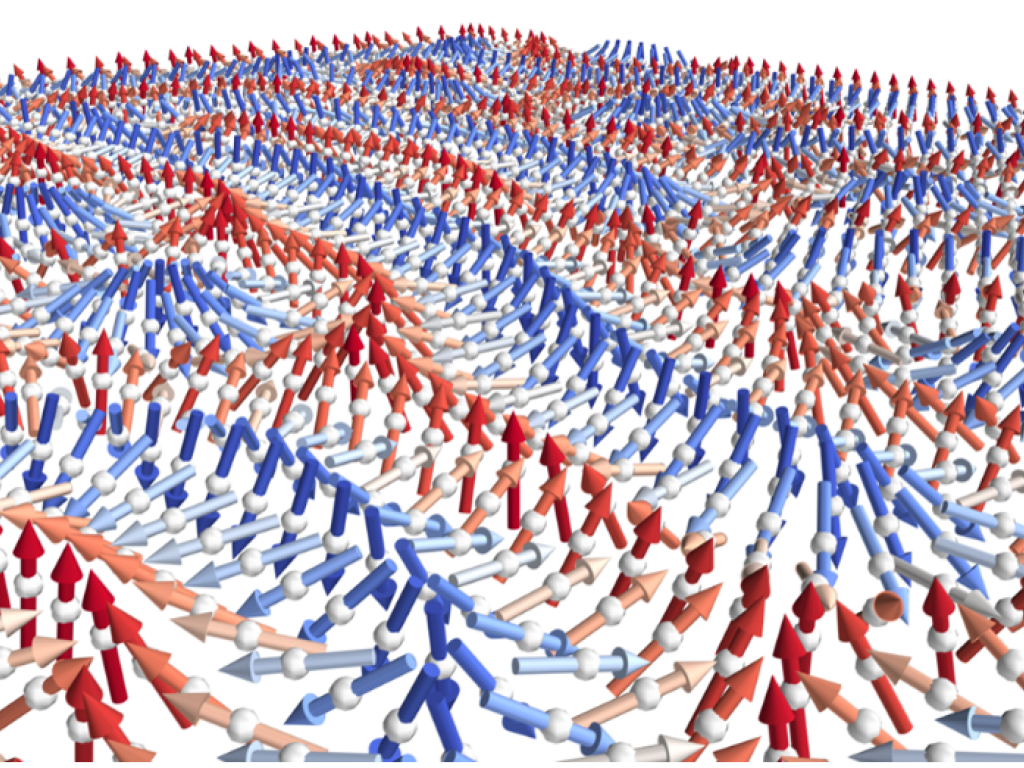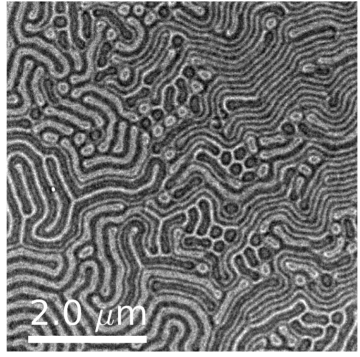
Editor's note: This article was produced by a student participating in the course J477/577: Strategic Science Communication, a collaboration between the School of Journalism and Communication’s Science Communication Minor program and the Research Communications unit in the Office of the Vice President for Research and Innovation.

It’s a beautiful, sunny day in Eugene, Oregon, but Ben McMorran, professor of physics, is deep underground.
Under the green and purple glow of the underground facility is the high-tech equipment that McMorran and his team use for their research. Gigantic instruments span the width of the entire room. With arms, levers, and knobs, these pieces of machinery resemble something straight out of a science fiction movie. McMorran is one of several researchers working in the Center for Advanced Materials Characterization in Oregon (CAMCOR), using state-of-the-art electron microscopes to discover new properties of materials at the atomic level.
McMorran’s team is interested in the magnetic fields found within certain materials, specifically thin films—a material applied to a substrate mere nano- or micrometers thick. Most people have played around with magnets enough to know their basic properties. Some materials can be magnetized, such that one end of the magnet has a north pole and the other end a south pole, resulting in a magnetic field being created. This field represents the magnetic force of the material in the space surrounding it. While typical magnetic fields exist as a sort of figure-8 or bubble around the material, some materials possess much more interesting properties.

McMorran and his team are interested in the phenomenon of skyrmions—magnetic fields shaped like vortices found in some metallic materials that curl in on themselves in three-dimensional space. McMorran describes them as similar to a smoke ring, curving in and out of the plane. While not a new discovery (skyrmions were first discovered in 1961), research surrounding the properties of skyrmions is making a resurgence in the physics community because of their potentially useful properties in modern technology.
By using a combination of multiple electron microscopy techniques, scanning electron microscopy with polarization analysis (SEMPA) and Lorentz transmission electron microscopy (L-TEM), researchers are now able to identify how the magnetic field is changing at both the exposed surface of a material and in the middle of the material. On top of viewing these skyrmions and magnetic field fluctuations in real materials, McMorran’s group is also creating a mathematical model to help explain what’s going on in more detail.

Sounds Cool, But What Are They Used For?
Perhaps the most exciting thing about skyrmions is in their potential applications. The first IBM computers used “magnetic bubbles” to store information in the form of bits. Now that the current form of disc storage requires ever more resources to run, scientists and engineers are turning to the past. Skyrmions are easily controlled by current and are far more resistant to imperfections in the wires they pass through than their old IBM counterparts, making them an ideal target for future computing improvements. This branch of physics investigating the use of skyrmions is known as spintronics, and it has grown steadily during the past few years. However, understanding the three-dimensionality of skyrmions is the key to perfecting their use in future technology.
“There are a lot of groups that are actively trying to make little nano wires and put skyrmions in there to move them around with currents and make real devices, but the behavior of that is going to depend on the three-dimensional structure,” McMorran said.
Skyrmions, Hurricanes, and Black Holes
Aside from the technological applications, the internal features of skyrmions have some parallels in the natural world. Theories about the nature of the mysterious phenomenon known as ball lightning have circulated for many years, but recent evidence suggests that the plasma of ball lightning shows the same patterns of flow and directionality as skyrmions. Hurricanes, too, appear to have the same vortex features that these magnetic skyrmions do. One of the most fascinating comparisons has to be that of Sagittarius A, the supermassive black hole at the center of our galaxy.
However, McMorran notes, “This is just a visual similarity at this point. It’s a black hole after all, and we’re actually seeing the far side of the black hole too, so we can’t just trust our eyes that this is also the same 3D structure, but it’s enticing. What if this is a common pattern in nature?”
Ultimately, the true relationship between magnetic field patterns and those in natural phenomena have yet to be confirmed, but the possibility of using skyrmions to explain the physics of flow in our natural world is quite a beautiful one.
